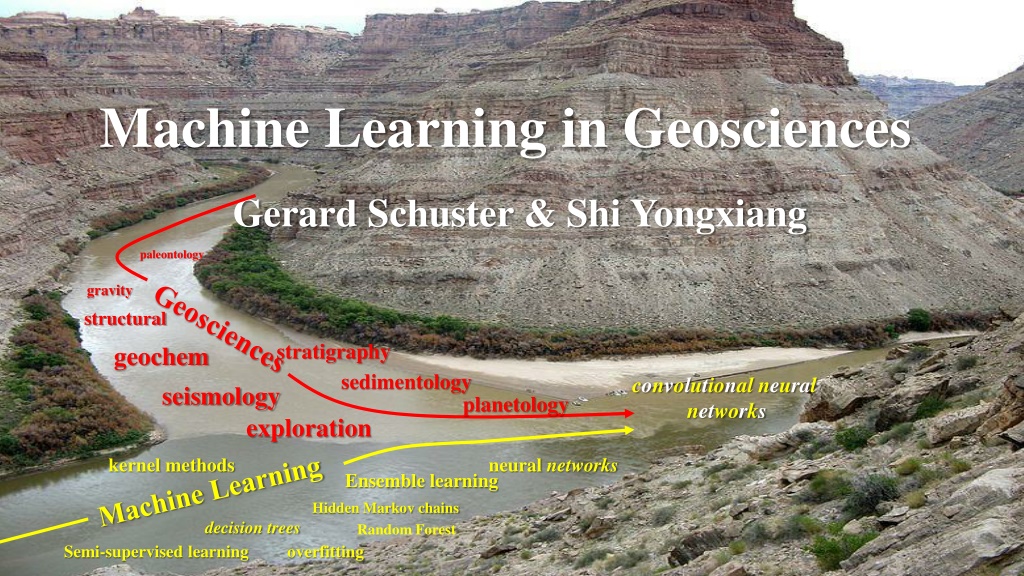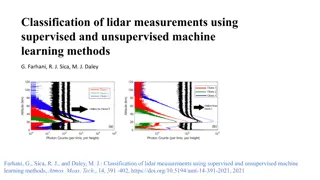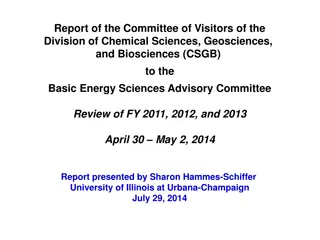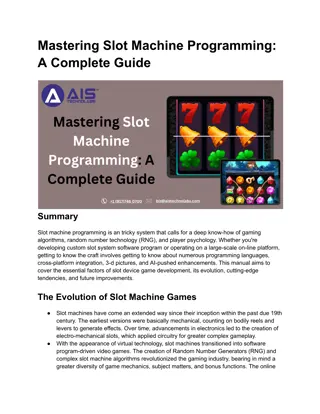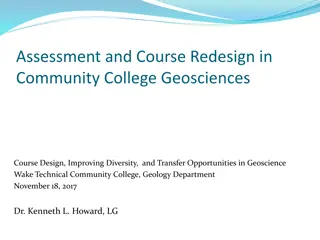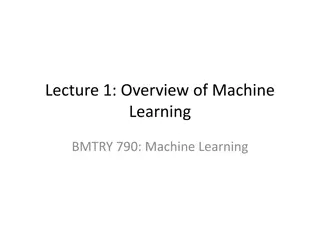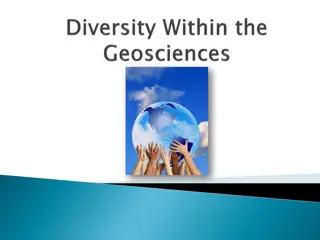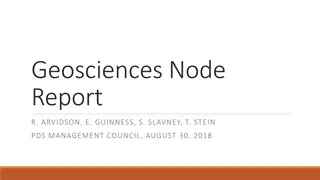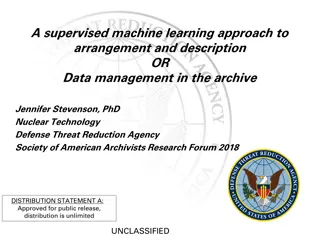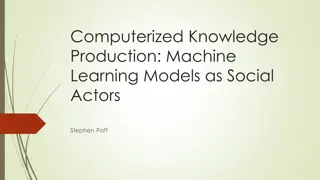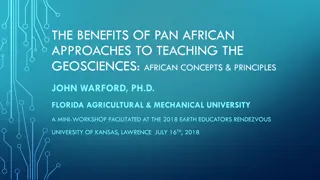Machine Learning in Geosciences and its Applications
Explore the intersection of machine learning and geosciences, covering topics like paleontology, gravity, structural stratigraphy, geochemistry, sedimentology, convolutional neural networks, seismology, planetology, exploration, kernel methods, ensemble learning, and more. Delve into the three major types of machine learning - supervised, unsupervised, and reinforcement learning - to understand their applications in geosciences.
Download Presentation

Please find below an Image/Link to download the presentation.
The content on the website is provided AS IS for your information and personal use only. It may not be sold, licensed, or shared on other websites without obtaining consent from the author. Download presentation by click this link. If you encounter any issues during the download, it is possible that the publisher has removed the file from their server.
E N D
Presentation Transcript
Machine Learning in Geosciences Gerard Schuster & Shi Yongxiang paleontology gravity structural stratigraphy geochem sedimentology convolutional neural networks seismology planetology exploration neural networks kernel methods Ensemble learning Hidden Markov chains Random Forest decision trees Semi-supervised learning overfitting
Todays Talks+Labs Introduction: Three Classes Machine Learning Unsupervised Learning Cluster Analysis: K-Means & DBSCAN Labs Supervised Learning: Neural Networks
Three Major Types of Machine Learning input weights output x(n) y(n) W Supervised Learning Given: training pairs (x(n), y(n)) Find: W y x x y Prograde & regressional features Deformed reflections features 4 26 256 2 . . . 88 0 1 0 0 . . . 0 . . . Salt dome Faults missed Di et al., 2019, GJI
Three Major Types of Machine Learning input neural weights output x(n) y(n) W Supervised Learning Given: training pairs (x(n), y(n)) Find: W Unsupervised Learning Separates CSG Into clusters; finds patterns/structure in data. No labeling y (x(n) , ?) x y Eruption Waiting Time (minutes) CSG FK Spectrum 4 26 256 2 . . . 88 0 1 0 0 . . . 0 Rayleigh t reflection kx x PCA, SVD, Cluster Analysis Old Faithful Eruption Duration (minutes)
Three Major Types of Machine Learning input neural weights output x(n) y(n) W Reinforcement Learning Given:(x(n) ,some output, grade) Find: W Supervised Learning Given: training pairs (x(n), y(n)) Find: W Unsupervised Learning Separates CSG Into clusters; finds patterns/structure in data. No labeling y (x(n) , ?) x y x y grade CSG FK Spectrum Eruption Waiting Time (minutes) 4 26 256 2 . . . 88 0 1 0 0 . . . 0 1 -1 0 1 . . . 1 Rayleigh 1 1 1 0 . . -1 -1 Good if more + than - t reflection kx x PCA, SVD, Cluster Analysis Old Faithful Eruption Duration (minutes)
Todays Talks+Labs Introduction: Three Classes Machine Learning Unsupervised Learning Cluster Analysis: K-Means & DBSCAN Labs Supervised Learning: Neural Networks
